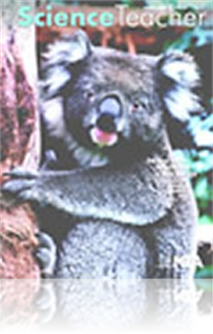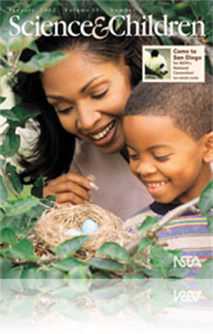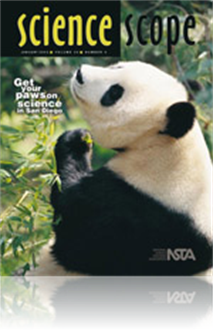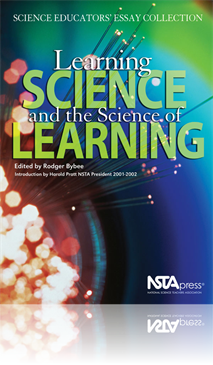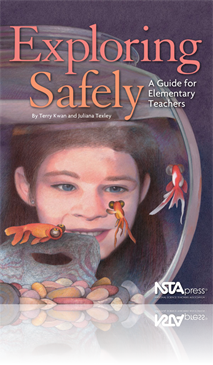All Resources
Book Chapter
In Which We Describe Motion and Then Change It
As far as inanimate objects are concerned, if you know what the object is doing and know all the things that will affect that object, you can predict what the object will be doing at a later time. That's useful for lots of things, such as flying pla...
Book Chapter
There's No Such Thing as Gravity--The Earth Sucks
What happens when you drop an object on the ground? Though it might not be obvious, the object speeds up as it falls. That means it's accelerating and there must be a force acting on it. The force that's acting on it is--all together now--gravity. In...
NSTA Press Book
Energy: Stop Faking It! Finally Understanding Science So You Can Teach It
Confounded by kinetic energy? Suspect that teaching about simple machines isn’t really so simple? Exasperated by electricity? If you fear the study of energy is beyond you, this entertaining book will do more than introduce you to the topic. It wi...
By William C. Robertson, Ph.D.
NSTA Press Book
Force and Motion: Stop Faking It! Finally Understanding Science So You Can Teach It
Intimidated by inertia? Frightened by forces? Mystified by Newton’s laws of motion? You’re not alone—and help is at hand. The Stop Faking It! Series is perfect for science teachers, home-schoolers, parents wanting to help with homework—all of...
By William C. Robertson, Ph.D.
Journal Article
What are slurper balls? Slurper balls are a unique way to stimulate interest and develop science skills at the middle level. Teachers can enhance students’ data collection and graphing skills using an activity that investigates the chemical propert...
Journal Article
Commentary: Learning with Virtual Skies
An opinion piece about NASA"s Virtual Skies website developed with the goal of teaching aviation concepts to high school students. This article features two lessons designed to help students apply current genetics research and to enrich their underst...
Journal Article
Drawing Out the Quiet Voices: Making science lectures accessible to all students
Lectures are still a key component of most science courses. During a survey of student groups who find lectures particularly challenging, a science teacher implemented “interactive lectures,” a method of conveying concepts, ideas, facts, and info...
Journal Article
Tech Trek: Technology-based planetary exploration
The lesson in this article is an example of how science educators can incorporate the Internet into the classroom....
Journal Article
Taking Science Dialogue by Storm
One teacher examines classroom discourse through a unit on tornadoes and natural catastrophes....
Journal Article
Science Sampler: The atomic dating game
This chemistry activity helps students visualize and understand how and why atoms combine. This concept is critical to a student's understanding of chemistry....
Book Chapter
How Students Learn and How Teachers Teach
In this chapter, the author explores the relationship between learning theories and teaching practices. It compares three features of scientific and educational theories, provides an overview of some historically noteworthy learning theories and the ...
Book Chapter
Assessment involves an ongoing investigation of student learning that influences teachers’ planning and instruction. Multiple assessment strategies should be used to provide feedback to students and teachers. Such strategies include questioning, co...
Book Chapter
Curriculum Reform, Professional Development, and Powerful Learning
The authors consider the important relationship between standards-based curriculum implementation and professional development. They begin by looking at the key recommendations about student learning and then discuss how curriculum materials can embo...
Book Chapter
Professional Development and How Teachers Learn: Developing Expert Science Teachers
Groundbreaking research on learning and cognition has produced many new insights into how people learn. These findings conclusively dispel the idea that short-term and isolated learning experiences can produce powerful learning. This is especially tr...
Book Chapter
Applying the Science of Learning to the Education of Prospective Science Teachers
Cognitive scientists have studied the highly organized and efficiently utilized characteristics of experts’ knowledge in thinking and problem solving. The authors discuss the important implications of this body of research for how instruction shoul...
Book Chapter
Scientific Inquiry, Student Learning, and the Science Curriculum
What we know about student learning establishes links between scientific inquiry and the science curriculum. In this chapter, the author discusses scientific inquiry and the current learning research. He then proposes that the science curriculum shou...
Book Chapter
Supporting the Science-Literacy Connection
Language arts and science are perceived as competing for classroom time and attention, and science is often neglected. However, effective literacy instruction need not be at the expense of meaningful science instruction. The authors explore the poten...
Book Chapter
Reaching the Zone of Optimal Learning: The Alignment of Curriculum, Instruction, and Assessment
The authors discuss curriculum, instruction, and assessment and how their integration enables students to achieve a strong knowledge base in science. After examining conventional beliefs and more contemporary views of curriculum, instruction, and ass...
Book Chapter
Alignment of Instruction with Knowledge of Student Learning
A series of classroom vignettes and student conversations provides a glimpse into how our theoretical understanding of human learning translates into science classroom practice. The surprisingly large number of components operating in an effective cl...
Book Chapter
Learner-centered science teaching begins with the stories of learners. Knowing our students, and thereby crafting lessons that account for their interests, experiences, and ambitions, can make science teaching vastly more effective. Whether studying ...
Book Chapter
Using the Laboratory to Enhance Student Learning
Typical hands-on, cookbook laboratory experiences do an extremely poor job of making apparent and playing off students’ prior ideas, engendering deep reflection, and promoting understanding of complex content. This chapter addresses how to transfor...
Book Chapter
Using Assessment to Help Students Learn
Assessment in the classroom is more than tests and quizzes on Friday. It is an everyday feature of classroom life. Students and teachers use assessment, for example, when they gauge the quality of a response to a question, judge the accuracy of a dia...
Book Chapter
Investigative science provides the opportunity for students to learn new skills. But it also means more work and responsibility for everyone. An active science program requires the distribution, use, and care of much more material and equipment tha...
Book Chapter
Sometimes you wonder how you’re going to get everything done. Each time you check off an item, two more appear. Those are the times to take stock of everything you’ve accomplished. Science safety can be like that. Just when you think you have eve...
Book Chapter
Consider the changes. Yesterday’s one-room schoolhouse had one teacher responsible for every subject, every grade, and maintenance of the classroom and schoolhouse. Today’s self-contained classroom has one teacher responsible for a diverse group ...
Book Chapter
When students with limited reading, mathematical, or communication skills engage in laboratory activities, new challenges pose additional safety risks to everyone in the classroom. It’s certainly possible—and good practice—to include students o...
Book Chapter
Government studies have indicated that more than 40 percent of school buildings are in such poor condition that they are unsafe for children. Even new facilities can be too crowded or architecturally unsuited for exploration. It’s important to reco...
Book Chapter
It takes a lot of “stuff” to conduct an activity-based science program. Teachers often use personal funds to purchase materials to use in their classes. They also save a lot from year to year and collect items for possible future use. But saving ...
Book Chapter
Maintaining living things in a classroom requires knowledge and preparation. It also requires the proper equipment and space. There are two primary goals in the study of living things: first, we want our students to respect life, and second, we want ...
Book Chapter
Today’s students have contact with many more complex chemicals in their homes than ever before but they may have little awareness of physical and chemical properties of those materials. This is a situation that can be extremely hazardous. Children�...
Book Chapter
Many safety books focus on chemistry, the “wet” physical science. Yet most elementary curricula appropriately concentrate on physical science that is easier to see—and more developmentally appropriate. The physical sciences provide great opport...
Book Chapter
Your own classroom is rich with resources and activities, but there are some things that simply can’t be done there. Therefore, well-planned field trips are a vital part of the total educational program. They play an important role in helping stude...





